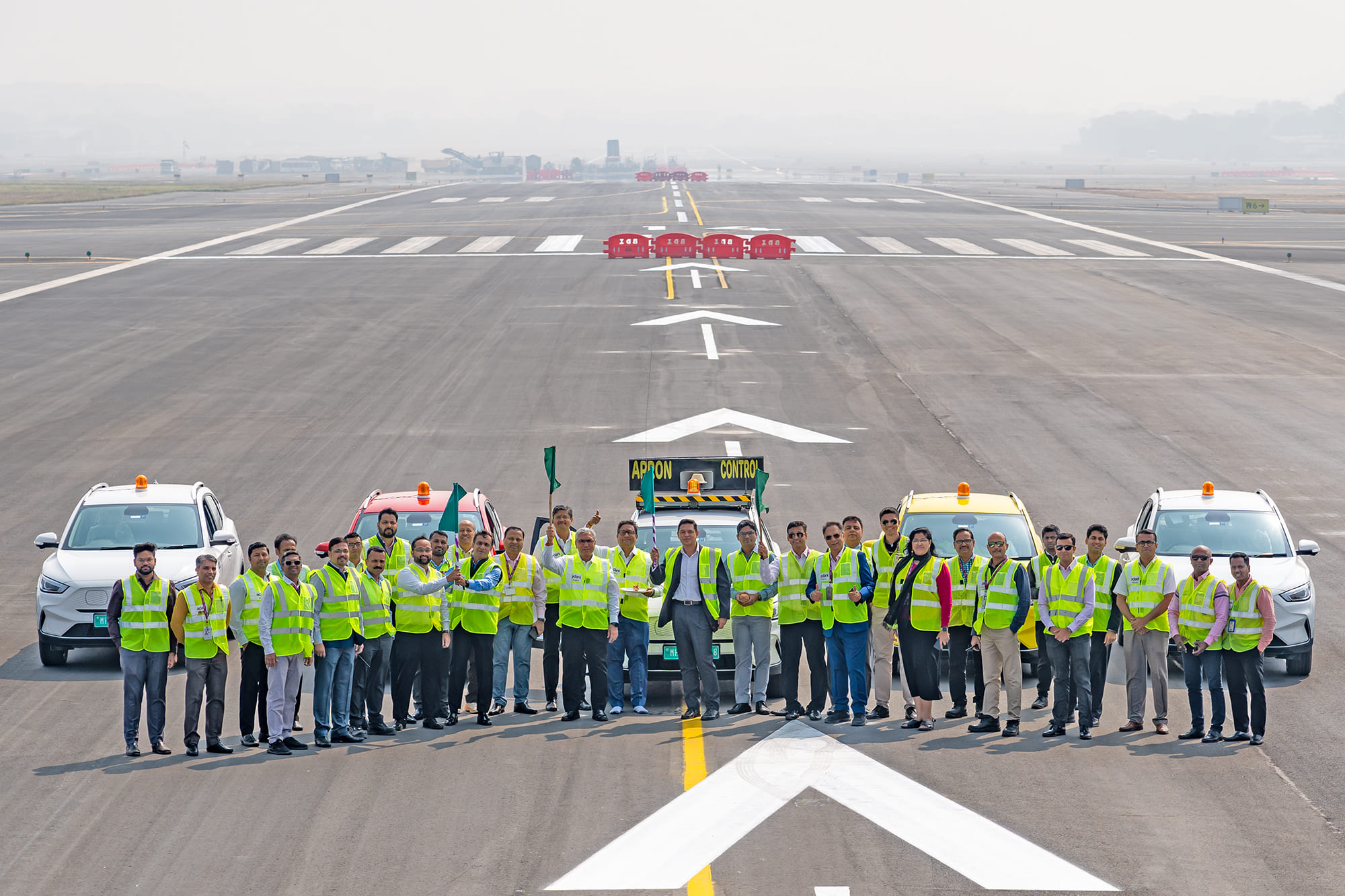
The robust demand for air travel continued into the Northern Summer travel season, led by the rebound in passenger traffic to North Asia with the full reopening of China, Hong Kong SAR, Japan, and Taiwan. This resulted in record half-year operating and net profits for the SIA Group.
SIA and Scoot carried 17.4 million passengers in the first six months of FY2023/24, an increase of 52.3% year-on-year. Passenger traffic grew 38.0% from a year before, outpacing the capacity expansion of 29.0%. As a result, the Group passenger load factor (PLF) improved by 5.8 percentage points to 88.8%, the highest ever half yearly PLF. SIA and Scoot achieved record PLFs of 88.0% and 91.3% respectively.
The demand for air freight remained soft due to inventory overhang, as well as geopolitical and macroeconomic headwinds. The cargo load factor fell 8.4 percentage points to 52.7% year-on-year as cargo loads dipped 6.0%, while capacity grew 8.9% mainly due to increased passenger aircraft bellyhold space. Increased competition and softer demand also contributed to the downward pressure on cargo yields, which fell by 46.2% from a year before. Nevertheless, at 41.8 cents per load tonne-kilometre, cargo yields remained 37.0% above pre-pandemic levels 1 .
Group revenue rose $745 million (+8.9%) to $9,162 million, with the $1,571 million (+26.3%) increase in passenger flown revenue to $7,550 million partially offset by a $1,039 million (-49.5%) decline in cargo flown revenue to $1,060 million.
Expenditure increased by $427 million (+5.9%) to $7,609 million, with the rise in non-fuel expenditure of $840 million (+18.7%) partially offset by a $413 million decrease (-15.3%) in net fuel cost. Net fuel cost fell to $2,283 million mainly due to a 29.2% decrease in fuel prices (-$1,077 million), despite higher volume uplifted (+$566 million) and lower fuel hedging gain (+$173 million). The 18.7% increase in non-fuel expenditure was in-line with the 19.9% increase in overall passenger and cargo capacity. Overall, the Group recorded an operating profit of $1,554 million, $320 million higher than a year before.
The Group posted a net profit of $1,441 million, $514 million more than the previous year (+55.4%), on the strong operating performance. The improvement in the bottom line was also aided by the net interest income versus net finance charges last year (+$222 million) and share of profits versus share of losses of associated companies last year (+$87 million), partially offset by a higher tax expense (-$118 million).
Second Quarter FY2023/24 – Profit and Loss
The Group posted a record quarterly operating profit of $799 million for the second quarter, an increase of $121 million (+17.8%) from last year, on the back of the strong demand over the peak summer season.
Group revenue rose $195 million (+4.3%) year-on-year to $4,683 million. Passenger flown revenue increased by $570 million (+17.3%) to $3,873 million, lifted by the 28.9% growth in traffic. Group PLF increased 2.0 percentage points to 88.6%, as traffic growth outpaced the increase in capacity (+26.0%). Cargo flown revenue dipped 48.3% or $484 million to $519 million due to a decline in yield (-48.0%) on weaker demand, coupled with the reinstatement of industry bellyhold cargo capacity. Nonetheless, cargo yields – at 39.2 cents per load tonne-kilometre – were 28.5% above pre-Covid levels 1 . Cargo loads remained flat year-on-year (-0.5%) while capacity increased 6.0%, resulting in a 3.5 percentage point drop in cargo load factor to 53.5%.
Group expenditure grew by $74 million (+1.9%) year-on-year to $3,884 million. This consisted of a $267 million increase (+11.2%) in non-fuel expenditure that was partially offset by a $193 million decrease (-13.6%) in net fuel cost. Net fuel cost fell to $1,230 million, mainly due to a 25.2% drop in fuel prices (-$478 million) that was
partially offset by higher volume uplifted (+$262 million) and a lower fuel hedging gain(+$72 million). The increase in non-fuel expenditure was below the 17.0% increase in overall capacity including cargo.
The Group posted a second quarter net profit of $707 million, an increase of $150 million (+26.9%) from a year before. The improvement was mainly due to the better operating performance (+$121 million), a net interest income versus net finance charges last year (+$78 million), and a surplus on disposal of aircraft, spares, and spare engines (+$22 million), and partially offset by higher tax expense (-$56 million).
Balance Sheet
As of 30 September 2023, the Group shareholders’ equity was $17.3 billion, a decline of $2.5 billion from 31 March 2023. This was due to the redemption in June 2023 of half of the Mandatory Convertible Bonds (MCBs) that were issued in June 2021, which amounted to $3.4 billion. Total debt balances decreased by $0.7 billion to $14.7 billion, mainly due to the repayment of borrowings. Consequently, the Group’s debt-equity ratio increased from 0.77 times to 0.85 times.
Cash and bank balances saw a decrease of $2.8 billion to $13.5 billion, with the drop in cash balance arising from the redemption of the MCBs, repayment of borrowings, and payment of dividends. This was partially mitigated by the $2.6 billion of net cash generated from operations, which included proceeds from forward sales. In addition to the cash on hand, the Group retains access to $2.4 billion of committed lines of credit, all of which remain undrawn. The Group’s balance sheet remains healthy and is among the strongest in the industry.
FLEET DEVELOPMENT
SIA added three aircraft to its operating fleet in the second quarter. These comprise one Airbus A350-900 (delivered in July 2023) and two Boeing 787-10s (delivered in August 2023 and September 2023).
As of 30 September 2023, the Group’s operating fleet had 202 aircraft comprising 195 passenger aircraft and seven freighters. SIA’s operating fleet comprised 140 passenger aircraft 2 and seven freighters, while Scoot had 55 passenger aircraft 3 . The Group has 96 aircraft 4 on order.
With an average age of seven years and one month, the Group operates one of the youngest and most fuel-efficient fleets in the airline industry 5 . This allows its airlines to offer greater comfort and innovative products to customers, while further driving operating efficiency and supporting ongoing efforts tolower carbon emissions.
NETWORK DEVELOPMENT
During the second quarter, SIA reinstated services to Busan while Scoot resumed flights to Jinan, Nanchang, and Shenzhen. As of 30 September 2023, the Group’s passenger network 6 covered 119 destinations in 36 countries and territories. SIA served 75 destinations while Scoot served 67 destinations. The cargo network comprised 124 destinations in 38 countries and territories.
In the Northern Winter operating season (29 October 2023 to 30 March 2024), SIA will re-introduce services to Chongqing (November 2023), Chengdu (December 2023), and Xiamen (between December 2023 and January 2024). As part of the regular review of the Group’s network, SIA will operate to Shenzhen in lieu of Scoot with the reinstatement of the full-service carrier’s flights from November 2023. SIA will also ramp up frequencies to Guangzhou from November 2023 from daily to double daily. Scoot will resume operations to Kunming and Changsha from November 2023. With these reinstatements, SIA and Scoot will serve 23 destinations in China compared to 25 points pre-pandemic 7 . In addition to the expansion in mainland China, Scoot will deploy supplementary services to Hong Kong SAR, Melbourne, and Sydney from December 2023 to February 2024 to cater to the year-end holiday demand.



 share
share































































